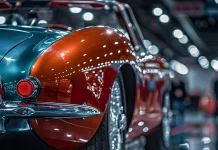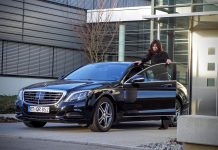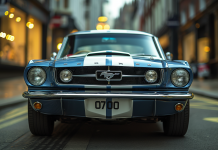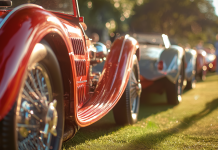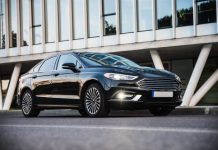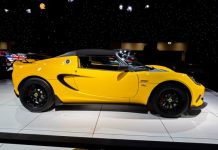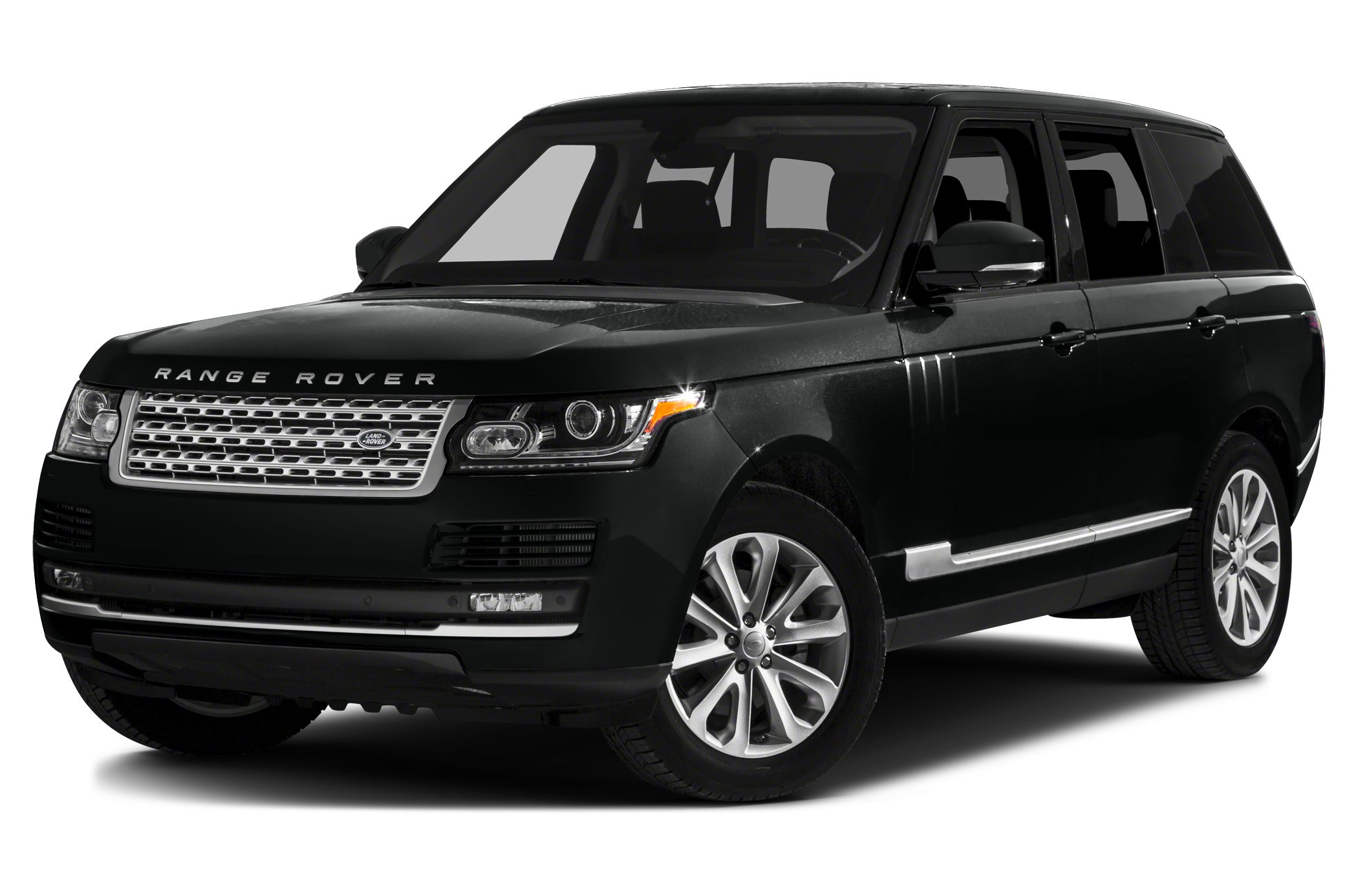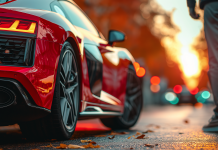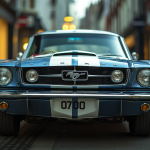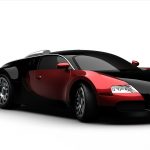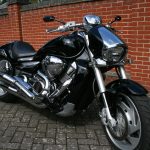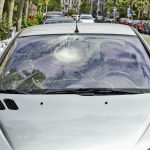Here we have the Sport variant of the recently released all-new Range Rover, and like its big brother, the Sport gets an all-aluminium chassis and body – to help drop 420kg from the V6 diesel models – that extra-curvy new body styling, and a higher price tag in exchange – and customers were asked about and approved this – for still greater technology and comfort. The design brief was for the fastest, most agile and most responsive Range Rover Sport yet.
To help the new car achieve these not inconsiderable goals the engineers made it lighter to improve performance and economy, and weaved in all their adjustable suspension knowledge, some cornering-assisting Torque Vectoring, and the usual off-road prowess.
Today, I’m driving the new Sport with a 288bhp V6 turbodiesel and the most potent performer; the 503bhp supercharged petrol V8. All new models get an 8-speed ZF automatic gearbox and four-wheel drive, although the low-range off-road gear ratios can be deleted for a cheaper, road-only Sport, while bigger families can now buy this SUV with a third row of two smaller seats for a 5 + 2 interior.
Range Rover Sport 3.0L V6 Diesel 292PS
The new Range Rover and Range Rover Sport models are styled with plenty of curve and swoop to their all-aluminium bodies, with both cars featuring smaller, more intricately designed front and rear light units that are peppered with LEDs.
The Sport gets a more hunkered down, road-ready look than the terrain-smashing Range Rover, and the Range Rover Sport engineers describe their new car as a GT-style SUV that can gobble up many exciting miles of tarmac with a controlled body and quick responding engine. But, if the road does disappear, there’ll be top-spec four-wheel drive, adjustable ride-height and clever control electronics, and all-weather tyres to get you out some very sticky situations.
Inside the new Sport we see an interior space that’s wider, bigger in the back (+24mm on knee room), and well lit by a large sunroof. The boot is bigger and gets a fully flat floor when the seats are all stowed, and there’s a swanky Meridian audio system.
The new car’s interior styling isn’t the farthest departure from the old car, with chunky, square lines to the design and a familiar layout, look and feel to the controls and switches. Of course, the more you pay for your new Sport, the more goodies you’ll get, but the usual high and mighty driving position is there, a nice-and-big colour screen mounted centre-dash, and plenty of head, elbow and knee space for even the tallest of drivers. The leather seating is the usual Range Rover treat too.
On the road
Depending on how you intend to drive your new Sport will depend on how much you need to spend on its clever undercarriage. The more powerful and expensive Sports get an impressive combination of engine power – like the snorty V8 supercharged – and adjustable suspension, Torque Vectoring and a computer-controlled rear differential.
All of these gizmos link up to execute the Dynamic driving mode, which, at the turn of the driving mode dial, prepares the Sport for its best on-road performance.
Steering and throttle are sharpened and the 500-times-a-second independently adjustable suspension keeps the body as flat and controlled as possible, as the corner speed increases. This system worked very well on the V8 car I also drove, but for this V6 diesel without the Dynamic assistance, the faster driving performance was still a marked improvement over the outgoing Sport model.
Calm and quiet for wind, road and engine noise, and very respectable body-roll-control; the 288bhp V6 diesel engine is also well up to the task of pulling the just-over-2,000kg Sport V6. With an official 60mph time of 6.8 seconds and a top speed of over 120mph, there’s accessible and usable real-world speed and acceleration aplenty in the 199g/km CO2 and claimed 37.7mpg Range Rover Sport V6 diesel. A less powerful variant of this engine will come to the range next year, as will 4-cylinder power, with both of these future Sport engines promising better fuel efficiency.
After plenty of miles on road and track I saw around 27mpg on the in-dash readout, and I think with more attention to a more frugal driving style, a good nudge over 30mpg could be found in this one.
Range Rover Sport 5.0L V8 Supercharged Petrol 510PS
This is the king of the new Range Rover Sport range, although a thumping V8 diesel will join the range next year, as as the range-topper, this Range Rover Sport can hit 60mph in just 5 seconds, and march on to over 140mph. The performance price to pay though is a CO2 output of 298g/km and that will attract a road tax of over £1,000 per year. But the engine soundtrack alone surely justifies a touch more expenditure here and there, right!
There’s a new and distinctly thrapping exhaust system for the V8 Sport; one that murmurs menacingly at idle, and roars and pops at full tilt. The torque and pick up at almost any point in the rev range is impressively fast for a car that weighs some 2,310kg, and the 8-speed ZF gearbox is a quick-shifting partner to this big-hearted engine. Overtakes are fast and safe in this one.
The range-topping V8 test car has everything from a performance point of view; the engine, Dynamic suspension, Torque Vectoring and that new e-differential, and when they all play together, this aggressive-looking Range Rover Sport V8 is an impressive weapon on the road. And on the mud and gravel, for that matter.
Torque Vectoring works by monitoring exactly what each wheel is doing and then supplying it with either braking or engine force to best track the Sport through the bends. In its most basic form it would push the outside-of-the-corner wheels faster and the inside wheels slower, to tighten the cornering line. With the e-diff., constantly reacting suspension and the grunty engine always on tap for torque, the whole Dynamic system does indeed live up to its name on the tarmac with fast and flat cornering. At the end of some mixed, sometimes very hot driving, I saw just over 17mpg on the dash readout.
Off-road and in thick mud, the new Sport does its thing to further cement the brand’s solid reputation for off-road readiness – I had muddy water lapping over the bonnet without missing a beat! – helped along by newly developed ‘mud and snow’ tyres that’ll give the best combination of on- and off-road grip all year round.
Ten second sum up
The new Range Rover Sport range may start at just over £50k, but it’s around the £70k mark where many buyers will be looking. You get quite a bit more car for this cash compared to the old Sport, and the two launch engines we’ve tested here certainly suit the car perfectly, depending on how fast you want to go and how much fuel you want to use on the way.
Dynamic driving mode is great, but the Sport without the top-notch undercarriage doesn’t suffer badly at all either, and how much you spend on goodies inside is up to you. But, the basics of engine power and improved efficiency, space and comfort, and desirability, are all right on track with the all-new Range Rover Sport.


